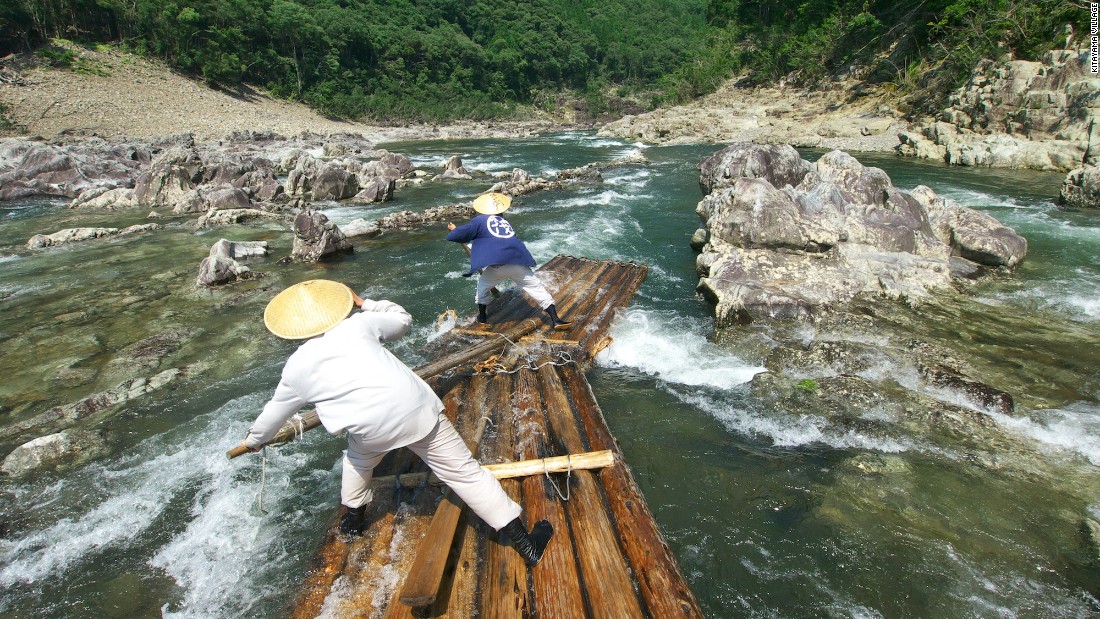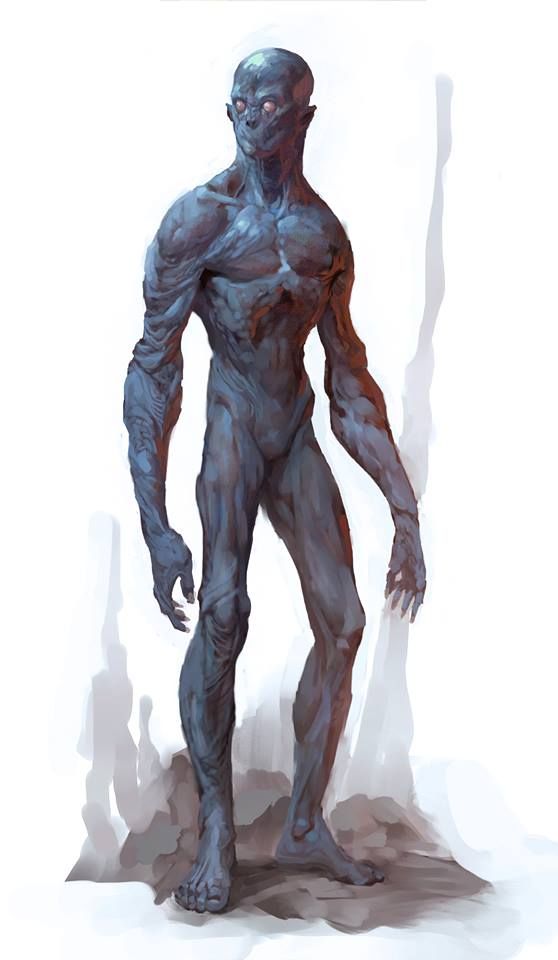So far we have sent the characters up the creek without a paddle, half drowned them and made them fight under water against a new and unknown monsterous race. Today, it is apt to make their day go from bad to worse!
The river they have been careering down so far has been randomly generated and designed to make it virtually impossible to swim out of or row out of. anyone reaching the shallows would be facing swimming rolls at something like -90 and taking krush criticals should they fail.
Now, I suggest giving them a bend in the river that has formed a bit of a calm pool. The river widens here and the rate of flow slows and the characters get a chance to reach the bank.
Finally, staggering to the bank it is time to reintroduce the Orcs that we had start this whole thing off in the first place. These have been tracking the river down stream assuming the characters will be killed in the rapids and their bodies washed up in this pool or another one further down stream. This is easy pickings for the orcs which is why they hand out near here in the first place.
This pool is also the domain of a huge lamprey. Once upon a time the orcs attacked a group of adventuring heroes just like the characters now. That party included an alchemist who was adept at making potions and the group regularly enhanced themselves with these. A perfectly normal lamprey fed off of one such magically enhanced hero and in drinking the hero’s blood also consumed a potion of Enlarge designed and dosed for a human. The same thing happened again with its second victim. The second potion was one of Extension used by the hero’s magician to extend the duration of his defensive spells. The final victim of the lamprey was the monk who had cast Strength III on himself. The combination of all this magic infused blood on the poor fish turned it into a huge monstrosity and trapped it in this pool. It now spends most of its time lurking in the mud at the bottom of the pool waiting for a victim of sufficient size to satisfy its hunger.
So returning to a current party they have just escaped or slain the freshwater merfolk and ended up in this pool where they can finally emerge from the river. As they do so they will be confronted with a band of orcs in front of them who have arrived at the same time. There should be just enough orcs that the party should not be certain of the outcome. I will not be specific as this is largely dependent on how the river run went, that could easily have broken many bones on its own and the fight against the merfolk.
The orcs know full well what lurks in the pool and will not go too close. They would prefer to use slings and spears to hold the characters off. They know full well what is coming next.

Warning: The image at the bottom of this post is really disturbing! It is a real, but dead, lamprey. It is just to give you a sense of how horrifying a lamprey is. That is a real one, we are dealing here with a fantasy 30′ one!
Behind the characters rising out of the water is Lampy the Lamprey. This is a 30′ long, 3′ diameter blood sucking fish.
| Level | 8 |
| Base Rate | 90 |
| Max Pace/MN Bonus | Run/0 |
| Speed MS/AQ | SL/SL |
| Size/Crit | Huge/LA |
| Hits | 90 |
| AT (DB) | 3(0) |
| Attacks | 110 HGr 100/Special ✓ * |
| Enc | 1 |
| Special Attack | Lampreys suck blood. If its grapple attack delivers a critical it will suck 3-30 hits of blood per round, starting the round after the critical was delivered. Ripping the lamprey off yourself or off someone else will deliver 4 ‘A’ slash criticals to the victim. Fire or eletricity may (Very Hard maneuver roll) cause the lamprey to release its prey. |
So as the characters face off the orcs, out of the water behind them rises the giant lamprey intent on attacking the person most in the water. It will attempt to grapple and latch on to the victim and drag them back into the pool and down to the bottom. As soon as they are dead i.e. drained of blood it will return for the next victim.
If the body is not too laden down with equipment it will just be left to float back up. As the death is probably going to be from loss of hits if enough concussion hits can be restored before the soul departs then the character can be revived without the need for life giving. That does make it rather important to finish off the orcs quickly!
This ‘misadventure’ is a potentially interesting way of weakening a party or even bringing low a very powerful party. It is unrelenting, the river is extremely difficult to fight but can deliver real harm to the characters. The orcs are do not need to be particularly numerous or high level. Many partys will almost discount an encounter with half a dozen orcs but in this case the orcs are just the trigger at the start and by the time they are encountered at the end they may be significantly more dangerous!
The fresh water merfolk and the Lampy are not things the characters are ever likely to have met before and tucked in the middle there was a Naiad. I have given the Naiad an additional power. She can rescue some of the characters by casting waterlungs on the characters. The mechanism for doing this is actually via another of the alchemists potions. The ‘drowned’ characters will not have known this at the time but the naiad had taken a draft of the potion and delivered it using a ‘kiss of life’ type action.
The anatomy of a story metaphor that we started with was put the characters up a tree, throw stones at them and then get them down again. Over the past three posts we have done the up the tree and thrown the stones. The getting them down again is the perfect time to throw the characters an adventure hook. Right now they are God knows where, beaten and bloodied. Now is a good time to kick them into a different direction.
Scroll down for the scary Lamprey photo!




 I want you to bear with me with this post. It is a first of a mini series that should be greater than the sum of its parts.
I want you to bear with me with this post. It is a first of a mini series that should be greater than the sum of its parts.

The challenge I see with RMU as opposed to RM2 is the apparent lack of willingness to look beyond fantasy (and even then it’s their definition of fantasy). RM has always suffered (IMO) from the lack of a solid, accessible setting, and RMU just seems to accelerate that trend. They also took steps (especially in the combat system) to render it almost useless for non-magic settings if you leave it RAW. The flexibility that came with RM2 (and even RMSS in its own way) seems to be disappearing.
In addition in a recent comment Hurin had noted the amount of HARP that seems to have found its way into RMU. There is nothing wrong with HARP but HARP is not Rolemaster and definitely not RM2!
That got me thinking. Last year I bought HARP Fantasy and HARP SF. I bought them because I want to run a SF game soon and as I have said many times before I have lost my Spacemaster books.
So HARP is certainly not locked into a fantasy setting and not into one single fantasy setting. Shadow World is statted out for HARP and HARP has its own core setting of Cyradon. HARP SF plays out in Tintamar but by default it also shares the same setting as Kulthea and Spacemaster because of the Shadow World connection.
One of the things I like about HARP is that the last release was to truly unify the fantasy and sf rules and make them interchangeable. I only needed the fantasy rules as monsters make great aliens.
There is a massive gulf between RM2 and HARP and I agree there is a lot of HARP in RMU. The skill system is the same, character creation is very similar. The move in RMU to less combat tables is almost a single step towards the HARP way of thinking and that I think is the problem with RMU. The only weakness as I see it with HARP, looking from a RM background point of view, is the combat system and the criticals in particular. The same old critical comes around again and again way too often and even in the same fight. The rest of the combat system works really nicely as far as I can tell.
Another interesting thing is that the HARP forums are far busier than the RM forums if you exclude the BETA test forums. If you include them then you also need to include the HARP development forums as well. I see a far greater variety of voices in the HARP debates than in the RM ones these days. There is an active HARP community around the game and new HARP books are eagerly awaited,even if most of them are just re-releases to bring them in line with the unified Fantasy/SF rules.
Whether HARP’s firearms are as good as intothatdarkness’s firearms is a completely different question but the fact remains that HARP does have viable settings and it does have modern day and SF elements that make it go well beyond the fantasy genre.
I think RMU is trying to learn from HARP but is struggling to take the old guard with it to some extent. Which is a pity as we are the old guard.